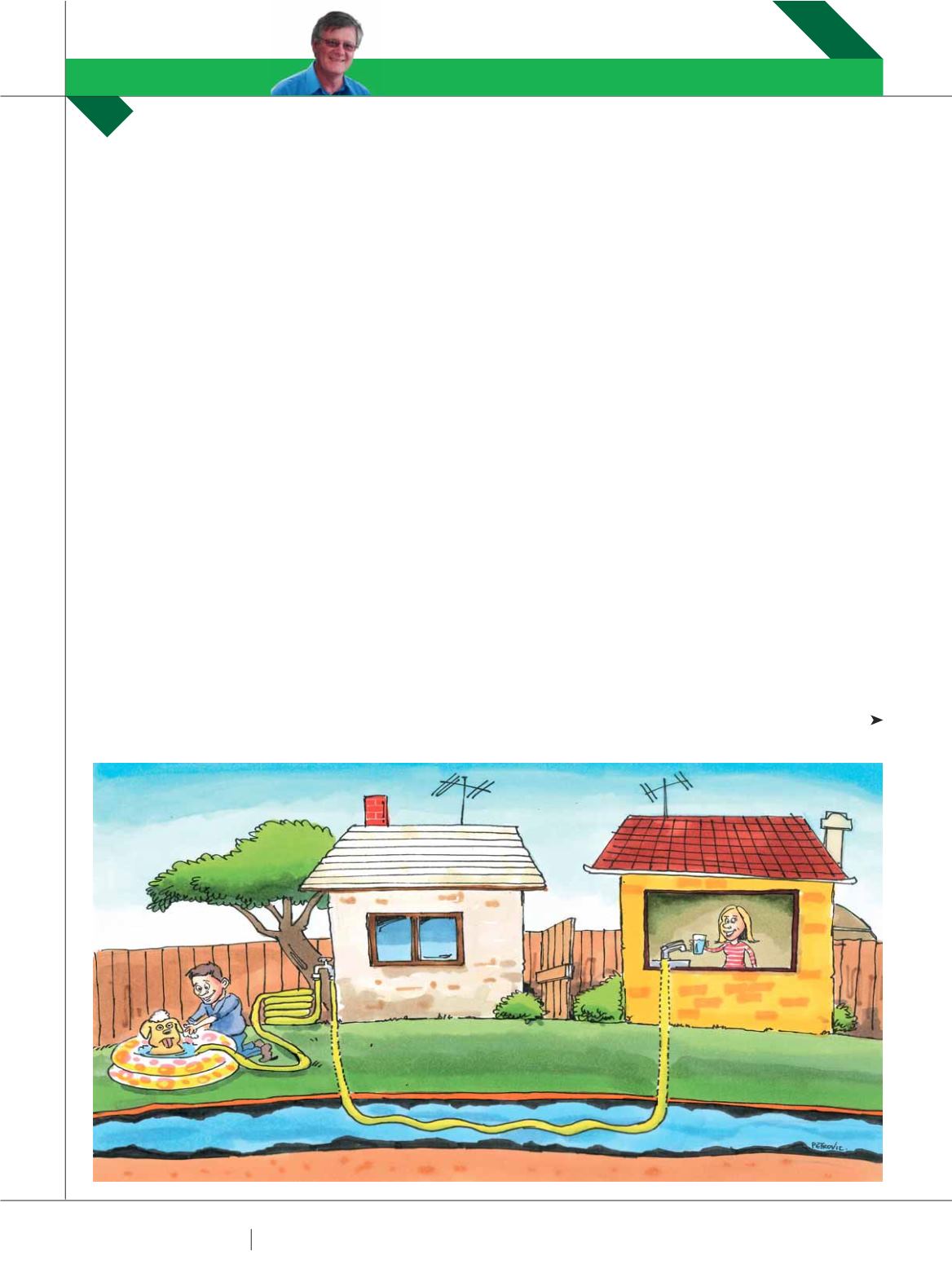

7 2
PLUMBING CONNECTION
SPRING 2015
BACK TO BASICS
S
o what is backflow prevention and Cross Connection
Control all about? – Isn’t it about protecting the
drinking water supply?
We risk seeing in our industry what always happens when
the interests of politics or finance get involved. We see the
watering down of regulations and requirements, the use of
less effective protection, and the introduction of ‘rationalist
thinking’ to explain and downplay the potential risks.
Let me explain what I mean by rationalist thinking.
Wikipedia suggests that rationalists have such a high
confidence in reason that proof and physical evidence are
unnecessary to ascertain truth – in other words, “there
are significant ways in which our concepts and knowledge
are gained independently of experience”. So in the context
of backflow prevention, the risks can be mathematically
lowered based on the minimal empirical evidence.
Cross connection control, which utilises a number of
methods, including backflow prevention devices to protect
the drinking water, is needed in our sophisticated plumbing
systems. Cross connection control is everything from the
air gap in the toilet cistern to the break in the filling pipe
on water tankers to the backflow prevention device in
the modern dual check water meter. It is so common, the
general populace does not know it exists or how important it
is in keeping them safe.
We know that cross connection control protects the public
water supply from possible contamination when a backflow
event occurs, and we also know that every time there is
a water main break that backsiphonage is evident, and
evidence shows that there are approximately two water main
breaks every hour in Australia. So why do different water
authorities across Australia assess the risks differently?
We now see an almost national approach to residential
containment or boundary protection being provided by
either dual check water meters or individual dual check
valves at the meter set. We understand that a residential
connection is generally low hazard and this type of device is
suitable, but this falls down as the dual check valve is never
tested and only generally replaced at the time of the meter
changeover. This differs across Australia, but is in the region
of every 8 -12 years.
Recent research out of the United States reveals that the
failure rate in the first year for a dual check valve is nearly
8%. This means that the backflow prevention in 8 out of
every 100 properties, if subject to a backsiphonage event,
could potentially contaminate the drinking water supply.
PETER MCLENNAN
WANTS TO GET BACK TO THE BASICS OF CROSS CONNECTION CONTROL.
BACKFLOW PREVENTION
PETER MCLENNAN
















